

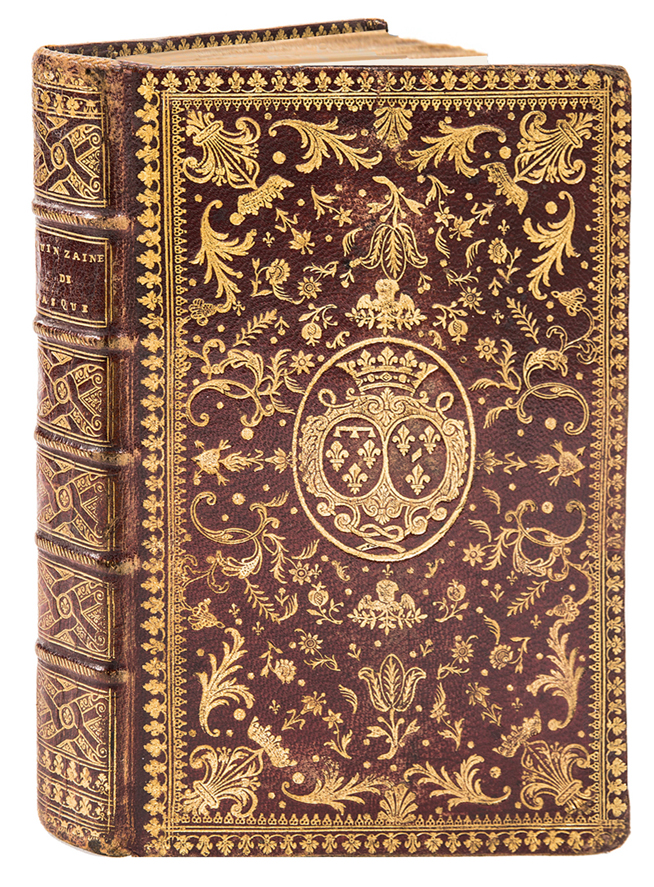
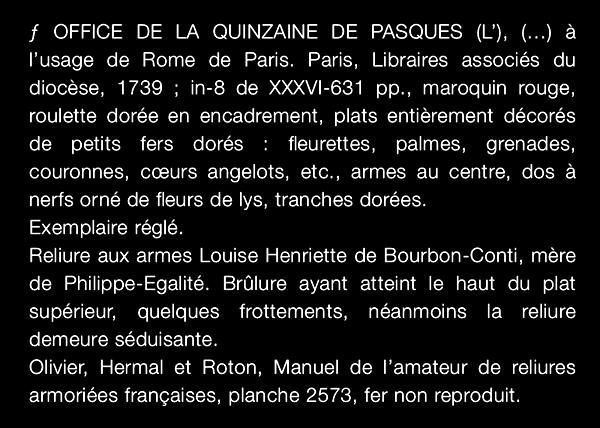
| The binding shown above is a restoration of a binding that appears in a 2017 Tajan online auction catalogue (click here to see it). In recent pages we have made an intensive study of some Louis Douceur mosaic bindings, three in particular are decorating the same 1739 OFFICE DE LA QUINZAINE DE PASQUE and all three bear the arms of FRANÇOISE-MARIE DE BOURBON (1677-1749). Now I have discovered this 4th example of the same 1739 Quinzaine with the arms of FRANÇOISE-MARIE DE BOURBON this is not however a mosaic. The Tajan experts state that the arms are of Louise Henriette de Bourbon-Conti, this is incorrect, her arms have the bar that separates the 3 fleur-de-lis, angled the opposite way (click here to learn more about Henriette). |
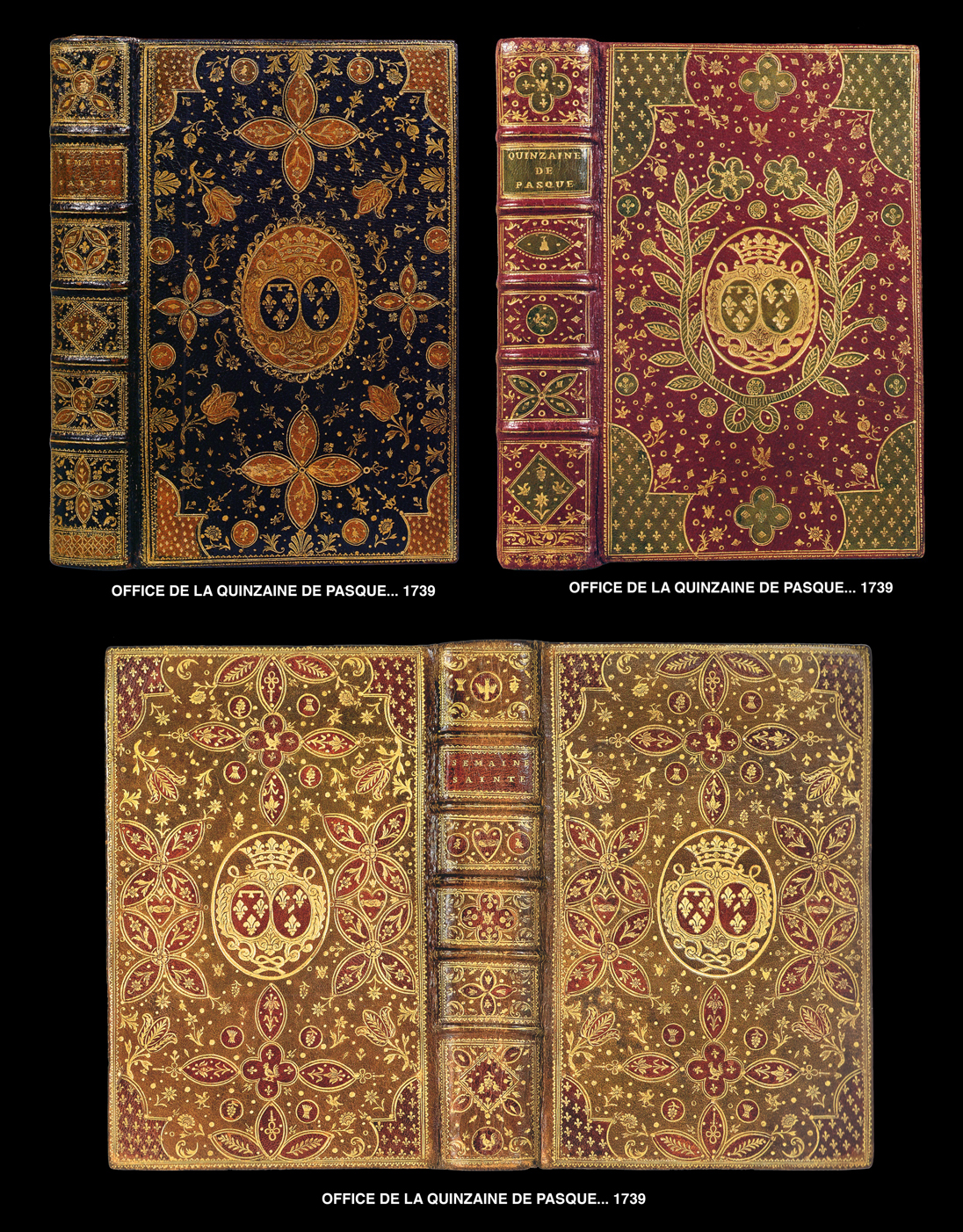
| In Comparative Diagram 1, we see Douceur's mosaic bindings made for FRANÇOISE-MARIE DE BOURBON the widow of the Regent, now we have yet another example, you can see many of the same tools were used in all of these bindings, however the spine of our non mosaic binding is a complete shock, and I thought I recognized it right away, however there are a number of varieties of this spine decoration that has been produced with small plaques. Similar spines appear in the Almanach Royals in the 1740's however this particular model is found on Caumartin bindings, the Caumartin binding that I show in Comparative Diagram 2, is found in G. D. Hobson's, Les reliures à la fanfare Amsterdam, 1970. |
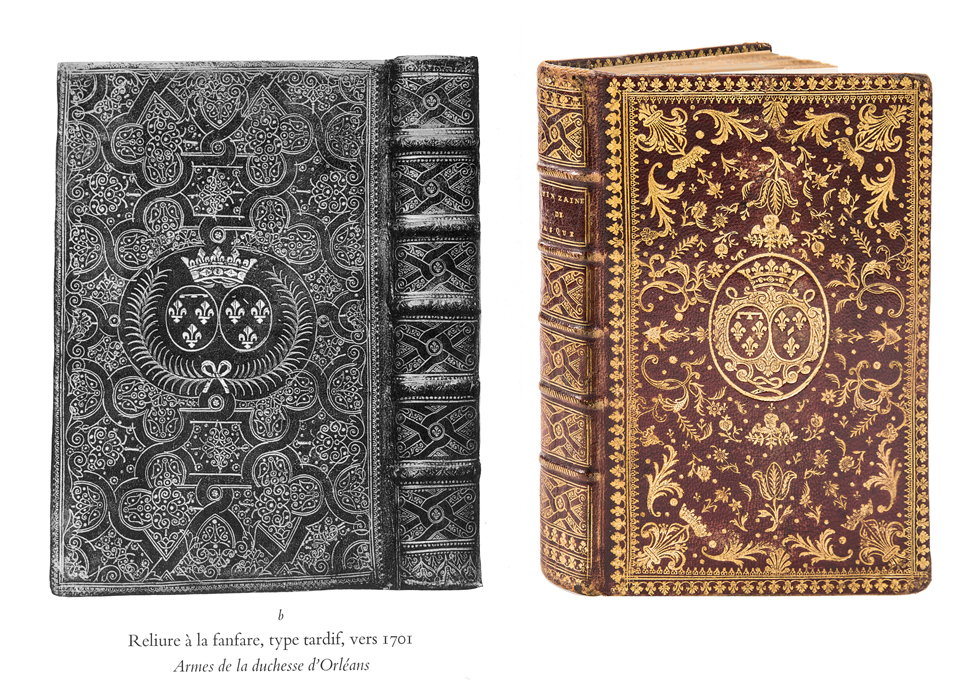
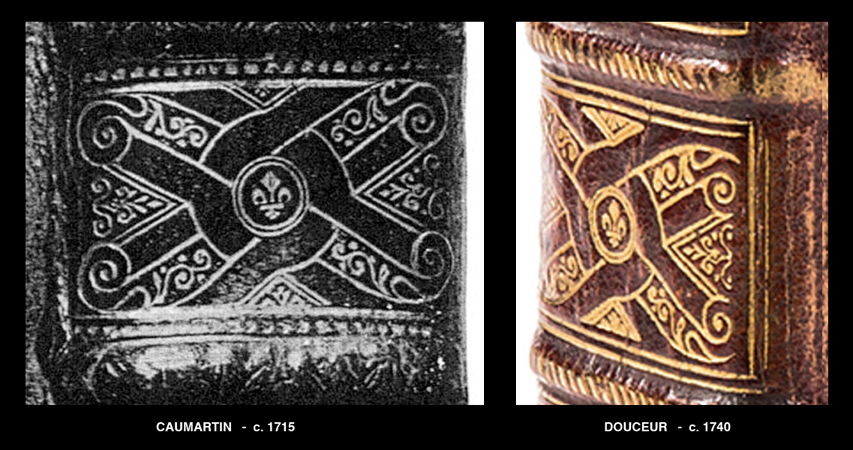
| This is mysterious, what is the connection between Louis Douceur and the atelier Caumartin? While most indications are that this atelier did not produce much of anything in the 18th century, I have found bindings decorated with Caumartin tools dating as late as 1715. |
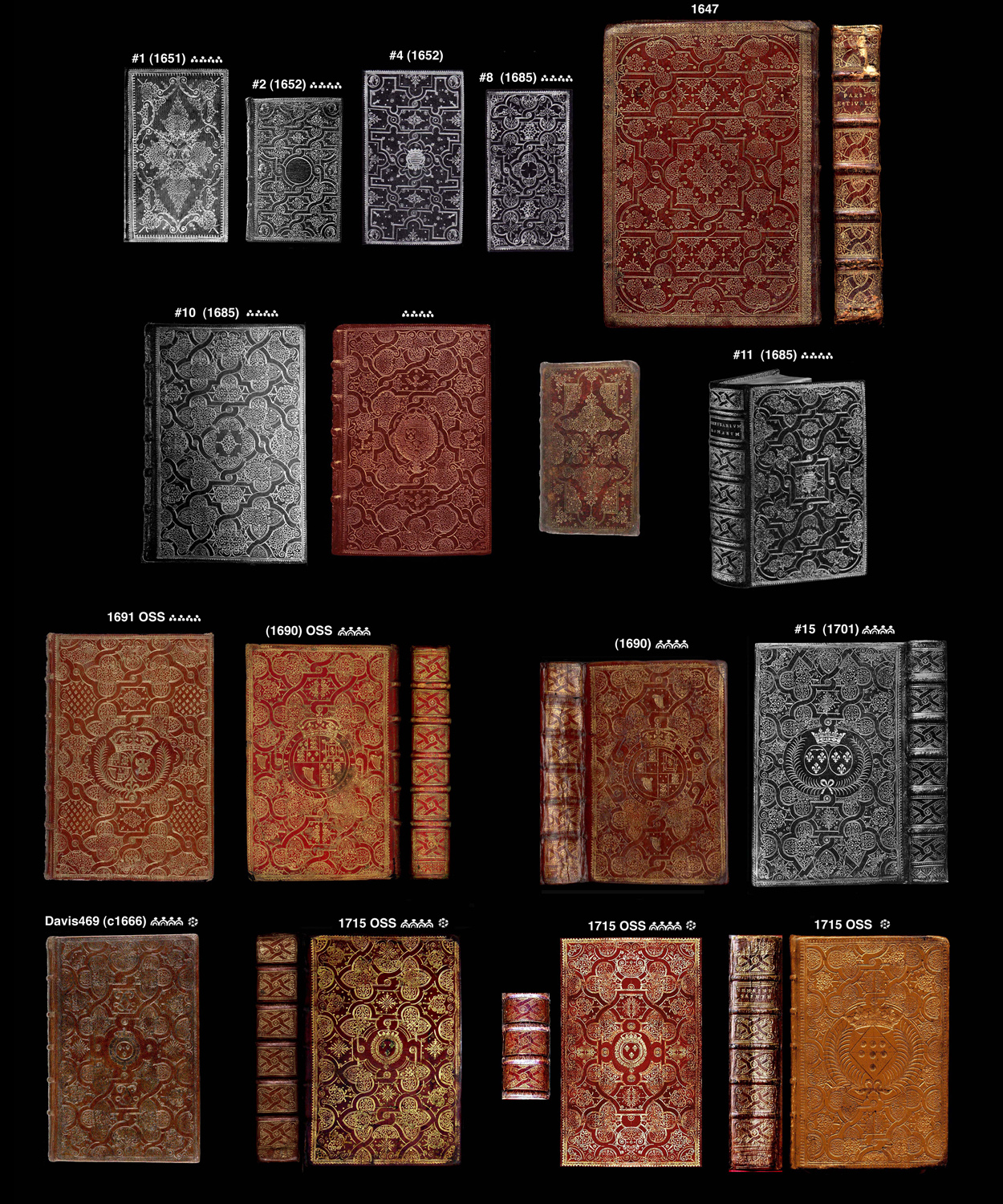
| In Comparative Diagram 4, we can see that even in 1685 (No. 11 = Esmerian Caumartin) this same spine plaque was in use indicating that by 1715 it had already been in use for 3 decades, by the time Douceur employed it it would have been in service for half a century. |
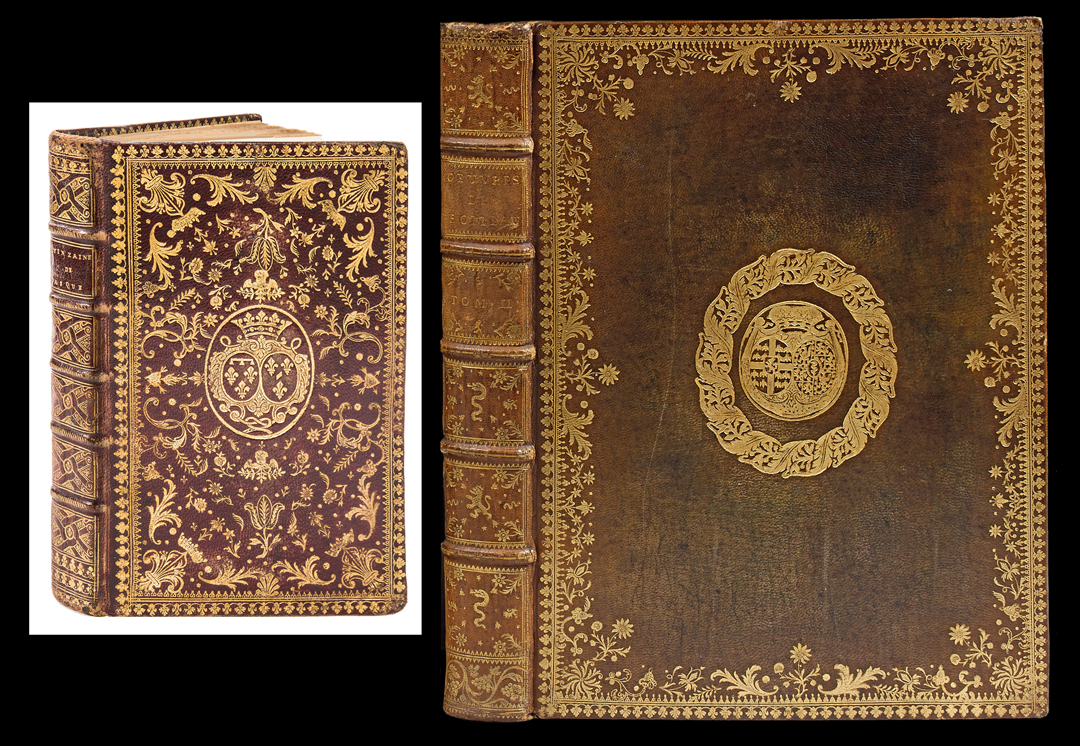
| Now that there is a proven link between Douceur and the Caumartin workshop, I decided to check another of my old obsessions, namely the three ring roulette of the Melun example, this I have detailed on another page. I noticed a 3 ring roulette on this 1739 Douceur, and show in Comparative Diagram 4 one of the few other examples of this roulette on a Douceur binding. It was a long shot but why not test the Melun roulette with this? |

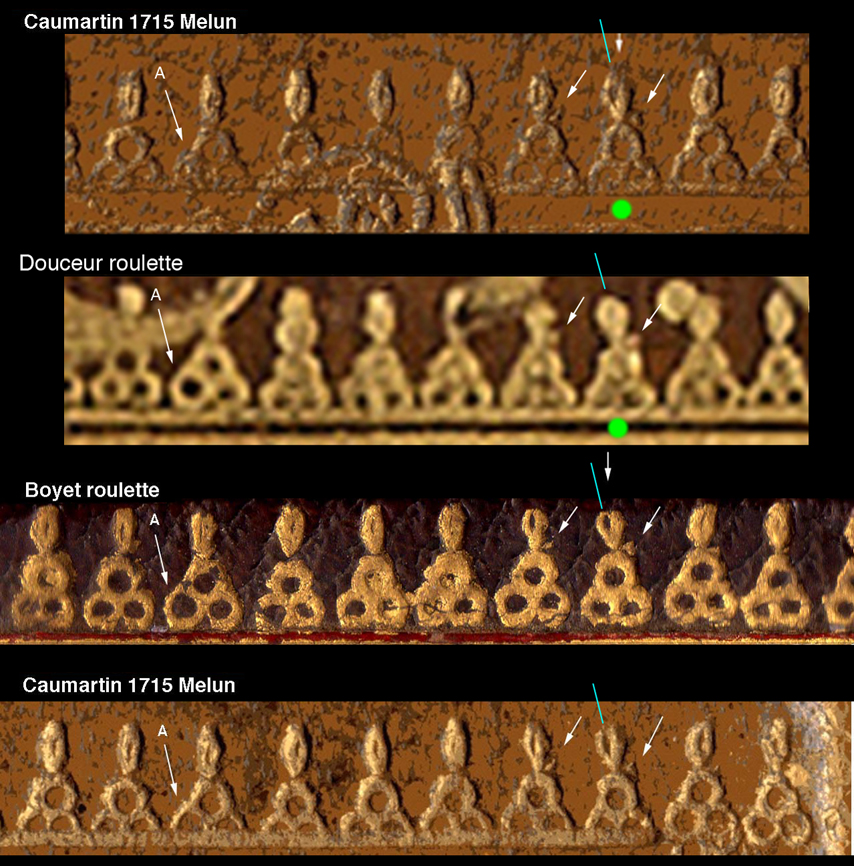
| In Comparative Diagram 5, I think I have been able to point out identical features in these roulette imprint examples, and in Comparative Diagram 6, I have attempted to show that these 3 ring roulette examples are all matching. This means that this roulette is actually a Boyet roulette and how can we explain this??? I have a theory, everyone has to have one sometimes, first I want to go back to the idea of Atelier du Roi... what I imagined is that the Kings binder, who ever he was, worked in a Royal workshop somewhere and the succeeding royal binder found some of the tools in that workshop from the previous binder... now the fact that the Caumartin bindings are often decorated with the official royal armorial blocks suggest that who ever made the Caumartin bindings worked in this workshop and that when Boyet became the royal binder he discovered this roulette in the workshop, similarly when Douceur was working on "Royal" bindings he worked in this workshop and found the 3 ring roulette as well as the Caumartin spine plaque. This is more complicated than that because Boyet was using this roulette before 1715, and when it is found on a 1715 Caumartin, this begs the question, who made the 1715 Caumartins? |
|
click here to return to the HOME page. click here to see an INDEX of the 2017 pages. see below links to previous work |
| Even experts are sometimes wrong, before you spend thousands on a book, please do your own research! Just because I say a certain binding can be attributed to le Maitre isn't any kind of guarantee, don't take my word for it, go a step further and get your own proof. In these pages I have provided you with a way of doing just that. |
| Virtual Bookings, created by L. A. Miller | return to the Home page of VIRTUAL BOOKBINDINGS |